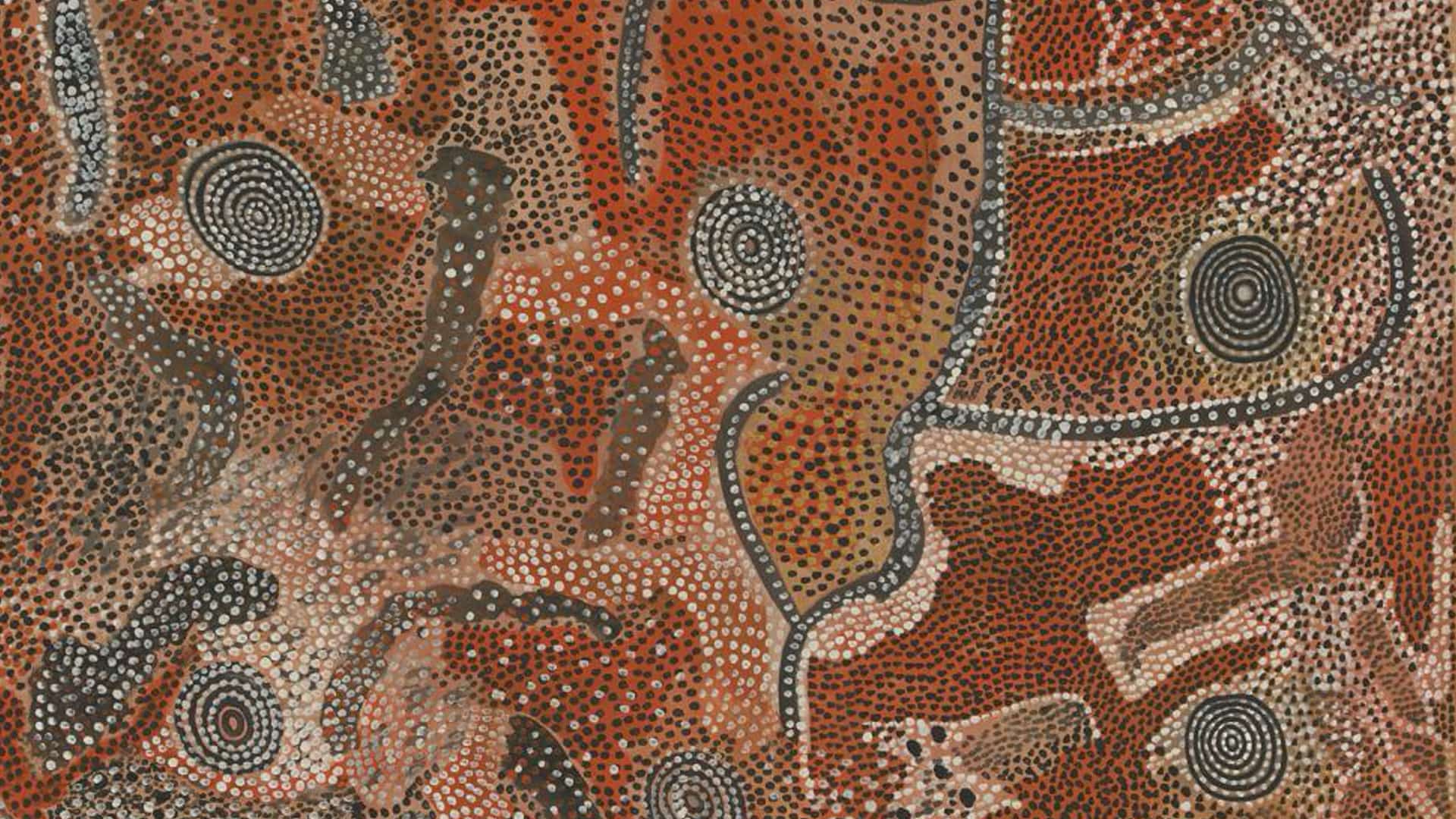-
A Master of Indigenous art | Johnny Warangkula Tjupurrula’s Kampurarrpa
With Judith Ryan AM, Senior Curator of Indigenous art
In his first work of this scale, Johnny Warangkula Tjupurrula represents an important place associated with the Dreaming of the old man.
-
Curating Indigenous Art
Presented in Collaboration with Koorie Heritage Trust, ACMI and Deakin University
Gail Harradine and Hannah Presley lead a conversation with local Indigenous art curators as part of Reconciliation Week.
-
Introduction to Indigenous Art in the NGV Collection
NGV Senior Curator of Indigenous Art Judith Ryan AM provides an introduction to Indigenous art – past, present and future – through close examination of major works in the NGV…
-
MARKING TIME: INDIGENOUS ART FROM THE NGV
-
Marking Time | Part 3: A momentous change in Indigenous Art
Explore Marking Time: Indigenous Art from the NGV with NGV Senior Curator of Indigenous Art, Judith Ryan AM as she shares that change that occurred in Indigenous Art in 1971…
-
Indigenous Voices of Creative Assertion and Resistance
In 1986, spirited Warlpiri women of Lajamanu, a small community in Gurindji Country on the edge of the Tanami Desert, in the Northern Territory, painted a groundbreaking series of gouaches…
-
Indigenous Voices of Creative Assertion and Resistance
Listen to Judith Ryan AM ‘The women’s work from Lajamanu community is both old and boldly ne
-
Marking Time: Indigenous Art from the NGV
Can’t see the Virtual Tour? Check to see if you have the system requirements Read the exhibition labels Visit the exhibition page
-
Marking Time: Indigenous Art from the NGV
When Europeans arrived, the old ways of painting changed … We have changed the law, the old fashioned way of painting has finished and we are new people doing new kinds of painting together for non-Aboriginal people as wel
-
From Bark to Neon: Indigenous Art from the NGV Collection
When Europeans arrived, the old ways of painting changed.
-
INTERNATIONAL INDIGENOUS DESIGN CHARTER LAUNCH
Presented by Indigenous Architecture and Design Victoria (IADV)
The International Indigenous Design Charter: Communication Design is a self-regulated, best practice guide that supports existing policies, procedures and protocols to ensure the rights of indigenous stakeholders
-
Hermansburg Potters: Indigenous Art, Football and Community Education Resource
The Hermannsburg Potters belong to a small community 130 kilometres south-west of Alice Springs.
-
Indigenous Art: Moving backwards into the future
Significant historical and contemporary Indigenous art works will sit side by side, exploring place and identity in Indigenous Art: Moving backwards into the future at The Ian Potter Centre: NGV…
-
Indigenous Art
Moving Backwards into the Future
Indigenous Art: Moving Backwards into the Future is an interdisciplinary exhibition that features more than 100 of the finest Aboriginal and Torres Strait Islander works from the NGV collection.
-
The Quick and the Dead, Purchasing Indigenous art 1988–1990
The new public prominence of Aboriginal art remains the greatest single revolution in the past quarter-century in Australian art
